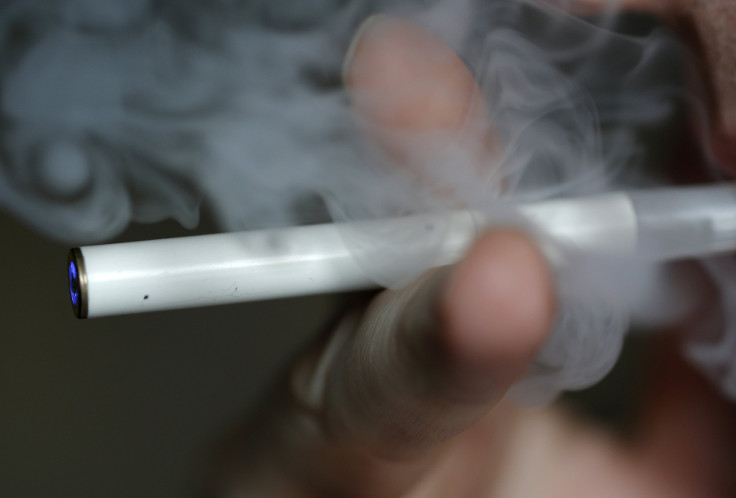Dozens Of Popular E-Liquids Contain Toxic, Potentially Harmful Chemicals: Study
KEY POINTS
- Researchers analyzed 65 popular e-liquids sold in Australia
- All of the products contained "one or more potentially harmful chemicals"
- Some of them even contained nicotine despite being marketed as "nicotine-free"
Dozens of readily available e-liquids used for e-cigarettes actually contain toxic and harmful chemicals, a team of researchers has found. Some of them can cause lung damage while others can affect immune response.
For their study, published in the Medical Journal of Australia, a team of researchers examined the chemical composition of 65 popular e-liquids sold in Australia in both their fresh and aged forms. The products they tested were available over-the-counter, Curtin University noted in a news release and they were marketed to be "nicotine-free."
"The measured levels of propylene glycol and glycerol often diverged from those recorded on the e-liquid label," the researchers wrote. "All e-liquids contained one or more potentially harmful chemicals, including benzaldehyde, menthol, trans -cinnamaldehyde and polycyclic aromatic hydrocarbons."
Many of these chemicals are actually known to be "toxins and irritants," one of the study's co-leads, Associate Professor Alexander Larcombe of Curtin University, said in the news release. For instance, 42 out of 65 e-liquids contained benzyl alcohol, the university noted, explaining that the chemical is actually a "solvent and flavor enhancer" that can cause "severe" skin and allergic reactions.
Meanwhile, benzaldehyde, which was found in almost all of the e-liquids "at dangerously high levels" and is typically added to the product for its almond-like flavor, is an inhalation irritant and can reduce a person's "ability to remove inhaled pathogens," Professor Larcombe explained.
"Finding benzaldehyde in a lot of these products is concerning. It means that a majority of vapers are breathing in a chemical that is classified by the Globally Harmonized System of Classification and Labelling of Chemicals as 'Harmful if inhaled,'" Larcombe noted, adding that it is included in the list of prohibited e-liquid ingredients according to the Therapeutic Goods Administration. This means it is actually banned to be in Australian e-liquids.
Trans-cinnamaldehyde, meanwhile, can impair immune response while menthol can actually enhance the addictive property of nicotine, which the researchers detected in 9% of the products even though they were sold as "nicotine-free."
"Nicotine is relatively common in 'nicotine-free' e-liquids, with implications for health and addiction," the researchers wrote. "Nicotine in Australian 'nicotine-free' e-liquids could be the result of accidental contamination or poor quality control during manufacture."
The fact that the e-liquids themselves do not really come with a comprehensive list of ingredients is concerning, Larcombe noted. This means users don't really know which chemicals they're actually inhaling.
Only recently, another team of researchers analyzing e-liquids and aerosols also found "thousands" of chemicals, most of which were unidentified while the others were deemed "potentially dangerous." So far, there has been "very little" research on exactly how these chemicals can affect health, Curtin University noted.
"The health effects of heating these chemicals and breathing them in are largely unknown, but it is likely that they will have negative impacts compared with breathing clean air," one of the study's co-authors, Prof. Ben Mullins of Curtin University, said in the news release.
"(O)ur finding that every e-liquid tested contained one or more chemicals potentially harmful to health provides a clear motivation for further investigations," the researchers wrote.

© Copyright IBTimes 2024. All rights reserved.






















